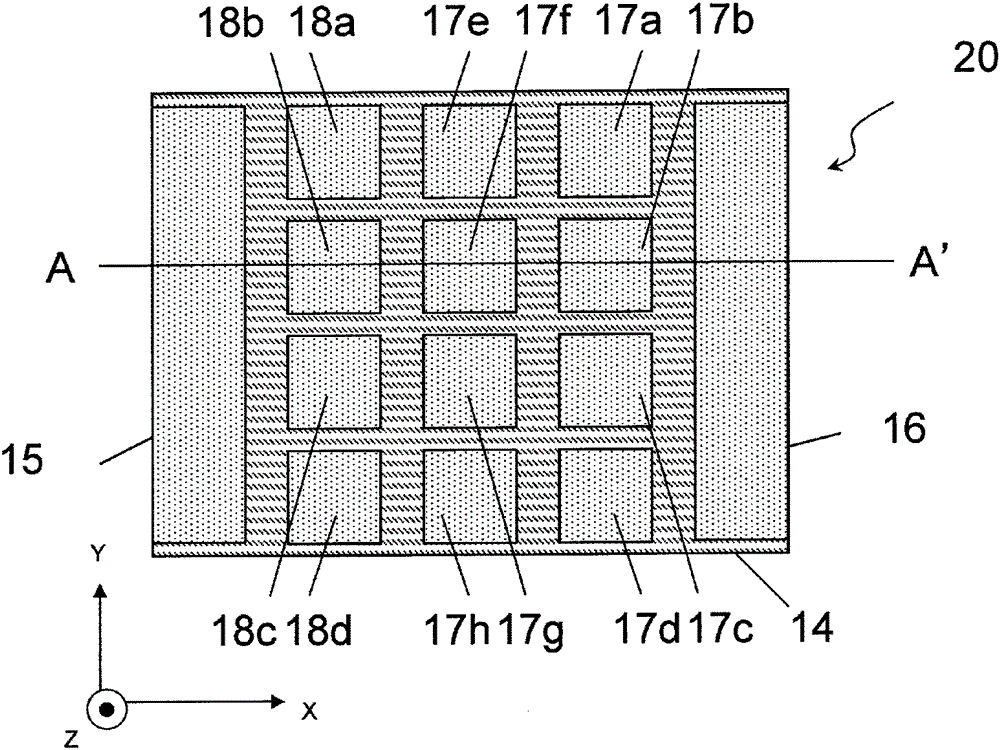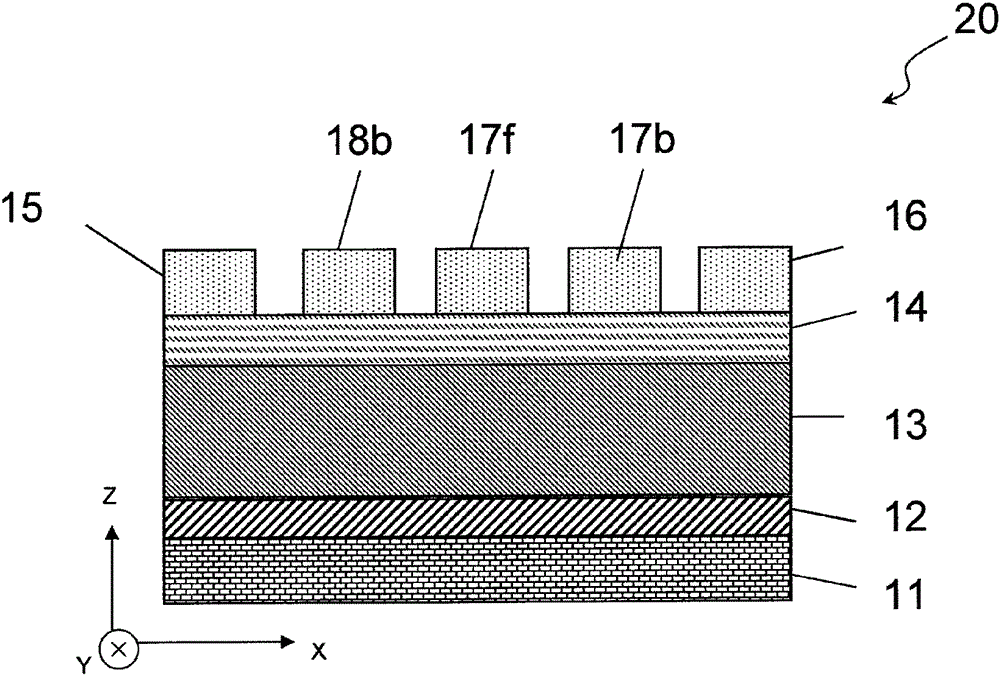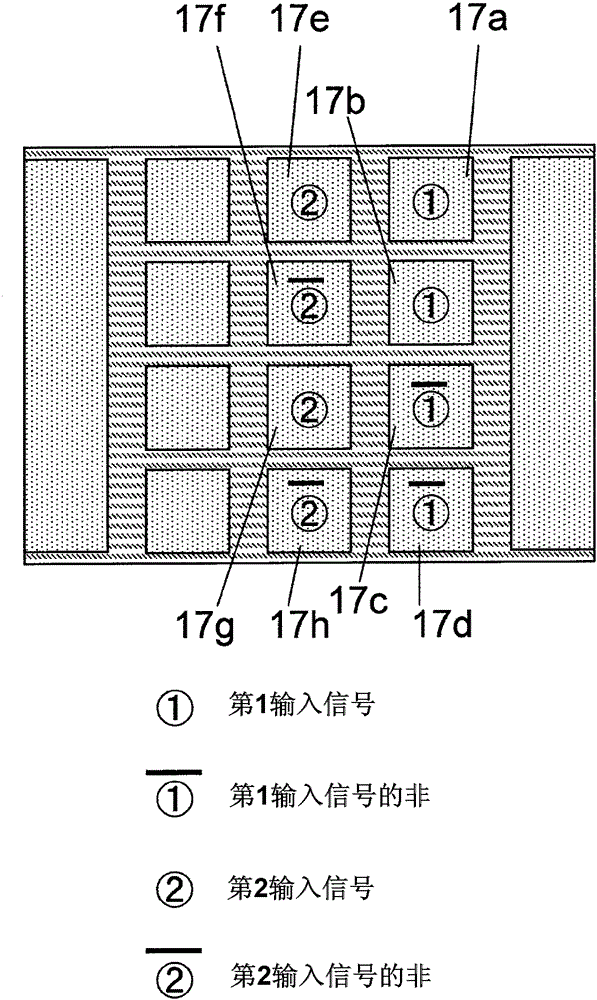Method of driving non-volatile logic circuit and non-volatile logic circuit
A logic circuit, non-volatile technology, applied to logic circuits using basic logic circuit components, logic circuits using specific components, logic circuits with logic functions, etc., can solve problems such as short circuits
- Summary
- Abstract
- Description
- Claims
- Application Information
AI Technical Summary
Problems solved by technology
Method used
Image
Examples
Embodiment approach 1
[0100] (Structure of the nonvolatile logic circuit 20)
[0101] Figure 1A A plan view of the nonvolatile logic circuit 20 according to Embodiment 1 is shown. Figure 1B express Figure 1A The cross-sectional view of A-A' in.
[0102] like Figure 1B As shown, a control electrode 12 , a ferroelectric film 13 , a semiconductor film 14 , and electrode groups 15 to 18 are sequentially stacked on a substrate 11 .
[0103] The electrode group has a power supply electrode 15, an output electrode 16, first to eighth input electrodes 17a to 17h, and first to fourth logic setting electrodes 18a to 18d.
[0104] like Figure 1A and Figure 1B As shown, the X direction, the Y direction, and the Z direction are the longitudinal direction, the direction perpendicular to the longitudinal direction, and the stacking direction of the ferroelectric film (13), respectively.
[0105] Along the X direction, the first to eighth input electrodes 17 a to 17 h and the first to fourth logic set...
Embodiment 1
[0199] (1) On the silicon substrate 11 having a surface covered with a silicon oxide film, a titanium film having a thickness of 5 nm and a platinum film having a thickness of 30 nm were sequentially formed using an electron gun evaporation method. Furthermore, SrRuO with a thickness of 10 nm was formed by pulsed laser deposition 3 (hereinafter referred to as SRO) film. In this manner, control electrode 12 is formed on silicon substrate 11 .
[0200] (2) The substrate was heated to 700°C. In the PLD cavity, a Pb(Zr,Ti)O 3 constituted ferroelectric film 13.
[0201] (3) The temperature of the substrate was set to 400° C., and a semiconductor film 14 made of ZnO was formed to have a thickness of 30 nm in the PLD chamber.
[0202] (4) On the semiconductor film 14, a resist pattern is formed by photolithography. Thereafter, portions of the semiconductor film 14 not covered with the resist are removed by etching using nitric acid.
[0203] (5) On the semiconductor film 14, a ...
PUM
 Login to View More
Login to View More Abstract
Description
Claims
Application Information
 Login to View More
Login to View More - R&D
- Intellectual Property
- Life Sciences
- Materials
- Tech Scout
- Unparalleled Data Quality
- Higher Quality Content
- 60% Fewer Hallucinations
Browse by: Latest US Patents, China's latest patents, Technical Efficacy Thesaurus, Application Domain, Technology Topic, Popular Technical Reports.
© 2025 PatSnap. All rights reserved.Legal|Privacy policy|Modern Slavery Act Transparency Statement|Sitemap|About US| Contact US: help@patsnap.com



